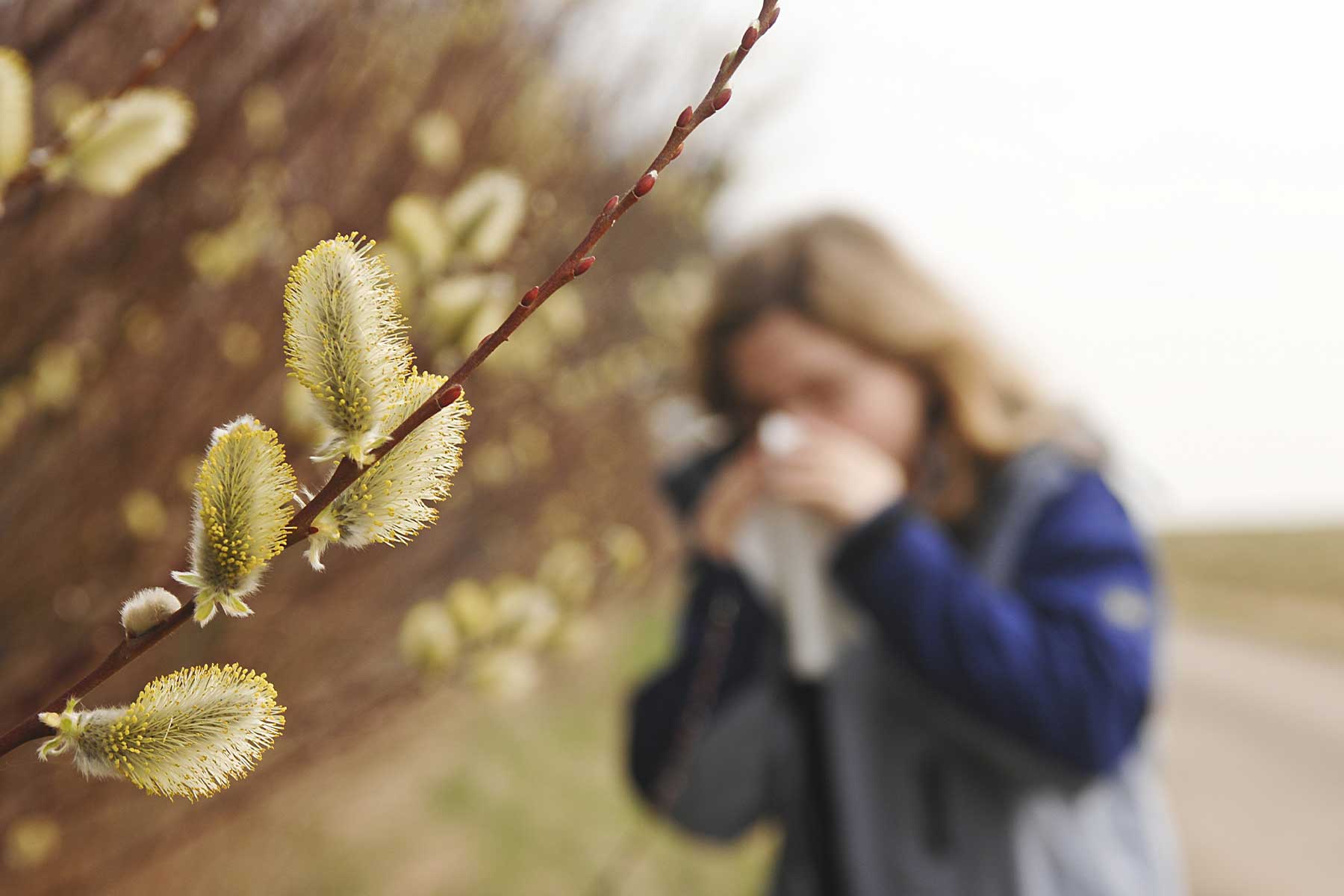Buying Guide – Hay Fever Symptoms
Hay Fever Symptoms – How To Tell If You Have A Pollen Allergy!
They occur particularly frequently in spring and early summer: the hay fever symptoms. If you suffer from watery eyes, a blocked or runny nose or an annoying urge to sneeze, there may be an allergy! In this guide you will learn which symptoms are typical of hay fever, what you can do about the immune reaction and how you can air cleaner help to be able to breathe easily, even when there is a lot of pollen.
What is hay fever anyway?
Hay fever is the slang term for an overreaction of the immune system against pollen from grass, bushes, trees or grain. So hay fever is an allergy to pollen from certain plants. The name hay fever comes from a time when the processes in the body that lead to an allergy were still unknown. The people of the time observed that their contemporaries had to sneeze especially near haystacks or suffered from a suddenly blocked nose. Based on the observations, it was thought at the time that the “sniff” comes from hay, i.e. dried grass. The observation is not wrong per se – however, hay fever is not the result of an intolerance to hay – but rather an immune reaction to the pollen of the grasses that make up the hay.

When does hay fever occur?
Hay fever is dependent on the pollen count that takes place at the time the plants bloom. The main time for hay fever is between February and October – and always depends on the type of plant to which the body reacts with symptoms. In early spring, from February to April, it is the pollen of hazelnut, alder or birch, among other things, that are responsible for hay fever symptoms. In the early summer between May and June, the pollen from grasses and cereals flies out. Weeds of all kinds are in bloom in late summer and autumn. At these times of the year, mugwort or ragweed allergies are common.
Neophytes – The Imported Pollen Hazard
For people who suffer from hay fever, introduced plant species in particular are an increasing problem. Olive trees, cypresses, hazel trees and of course the “upright ragweed”, better known as ragweed, sometimes trigger violent immune reactions in the form of hay fever. Ambrosia reached Europe as early as the 1860s with grain deliveries from North America – and is spreading even further in Germany due to climate change. The problem with the ambrosia plant is the immensely high number of pollen. A single plant can produce up to a billion pollen – and the smallest concentrations in the air are enough to trigger severe allergies and even asthma. In addition, ragweed remains comparatively long in the main pollen season. The plants release their pollen into the air until October. When choosing the location, the herb is not picky. Ambrosia can be found on fallow land, on traffic islands, on grass verges and also on private properties. The danger from ambrosia is particularly high here, because many property owners are not even aware of the problem that ambrosia can cause. There are also no laws that require the herb to be removed immediately.
Food hay fever – cross-reactions are responsible
Many people react with hay fever symptoms not only to pollen, but also to certain foods! Because there are plant-based foods whose ingredients are similar to those of pollen. The body cannot determine any difference here and also reacts to the substances in the food with allergic reactions. This so-called cross allergy triggers hay fever symptoms even though there is no pollen floating around in the air.
What are the typical symptoms of hay fever?
As soon as the pollen floating in the air gets into the body via the mucous membranes of the nose or eyes, an immune reaction is triggered – hay fever. Typical symptoms of a pollen allergy include
- Strong urge to sneeze
- Swelling of the lining of the nose
- Stuffy or runny nose
- Uncomfortable scratching in the throat
- Red, watery and itchy eyes
- Cough in places which can develop into allergic asthma
- headache
- sleep disorders
What can you do against hay fever?
There is no cure for hay fever, but the symptoms can be combated well. First of all, it is important to know the exact triggers for the hay fever. A visit to the doctor is essential for this. The doctor can use an allergy test to find out which pollen the immune system is reacting to. If the triggers for hay fever are then known, the allergy can be countered with behaviors:
- The air pollution with allergenic pollen can be determined daily via a pollen forecast (online)
- During the time of the strongest pollen count, a vacation in less polluted areas should be planned
- The pollen count is strongest in the city in the evening and in the country in the morning hours. Accordingly, outdoor activities should be planned and carried out
- Always select plants in the garden or on the balcony so that no allergy-causing pollen is distributed
- If you are allergic to grass pollen, the lawn in the garden should always be kept as short as possible
- A special pollen filter can be installed in the car
- Vacuum carpets and upholstered furniture as often as possible
- Wash your hair regularly, especially before going to bed
- Pollen screens on the windows reduce the pollution of the room air with pollen
- Only ventilate the apartment when it is raining; this is where the air pollution with pollen is lowest
Air purifier for hay fever symptoms
A air cleaner can be the perfect weapon against hay fever in living rooms or in the office! Because a air cleaner Thoroughly filters the air, reliably holds the smallest particles such as pollen and thus significantly minimizes the burden of hay fever. For a high effect, the air purifier should at least be equipped with a HEPA filter. A air cleaner with this filter already holds a large part of the pollen and is at the same time available quite inexpensively. Air purifiers with an activated carbon filter are even more efficient. These air cleaner have a significantly increased filter capacity and permanently filter even the smallest pollen out of the room air. Air purifiers, which additionally humidify the room air, are also recommended for hay fever. The increased humidity of the room air makes breathing easier in many cases – an advantage that should not be underestimated, especially with hay fever! In general, if you are allergic to pollen, air purifiers are one of the best ways to reduce the symptoms of hay fever!

